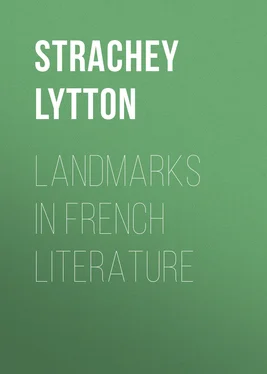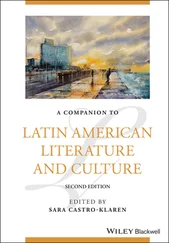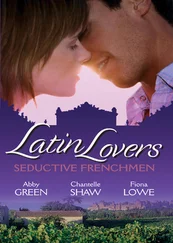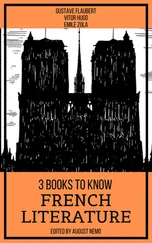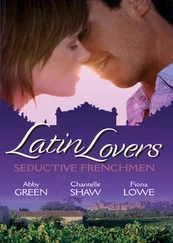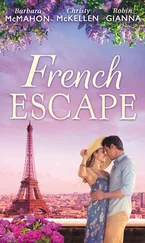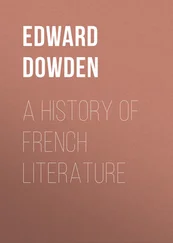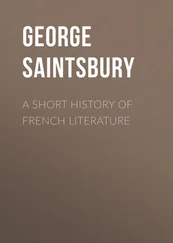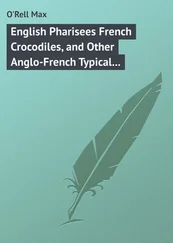Lytton Strachey - Landmarks in French Literature
Здесь есть возможность читать онлайн «Lytton Strachey - Landmarks in French Literature» — ознакомительный отрывок электронной книги совершенно бесплатно, а после прочтения отрывка купить полную версию. В некоторых случаях можно слушать аудио, скачать через торрент в формате fb2 и присутствует краткое содержание. Жанр: Языкознание, foreign_antique, foreign_prose, Зарубежные любовные романы, на английском языке. Описание произведения, (предисловие) а так же отзывы посетителей доступны на портале библиотеки ЛибКат.
- Название:Landmarks in French Literature
- Автор:
- Жанр:
- Год:неизвестен
- ISBN:нет данных
- Рейтинг книги:4 / 5. Голосов: 1
-
Избранное:Добавить в избранное
- Отзывы:
-
Ваша оценка:
- 80
- 1
- 2
- 3
- 4
- 5
Landmarks in French Literature: краткое содержание, описание и аннотация
Предлагаем к чтению аннотацию, описание, краткое содержание или предисловие (зависит от того, что написал сам автор книги «Landmarks in French Literature»). Если вы не нашли необходимую информацию о книге — напишите в комментариях, мы постараемся отыскать её.
Landmarks in French Literature — читать онлайн ознакомительный отрывок
Ниже представлен текст книги, разбитый по страницам. Система сохранения места последней прочитанной страницы, позволяет с удобством читать онлайн бесплатно книгу «Landmarks in French Literature», без необходимости каждый раз заново искать на чём Вы остановились. Поставьте закладку, и сможете в любой момент перейти на страницу, на которой закончили чтение.
Интервал:
Закладка:
Estoilette, je te voi,
Que la lune trait à soi;
Nicolete est avec toi,
M'amiete o le blond poil.
(Little star, I see thee there,
That the moon draws close to her!
Nicolette is with thee there,
My love of the yellow hair.)—
who disdains the joys of Paradise, since they exclude the joys of loving—
En paradis qu'ai-je a faire? Je n'i quier entrer, mais que j'aie Nicolete, ma très douce amie que j'aime tant.... Mais en enfer voil jou aler. Car en enfer vont li bel clerc et li bel cevalier, qui sont mort as tournois et as rices guerres, et li bien sergant, et li franc homme.... Avec ciax voil jou aler, mais que j'aie Nicolete, ma très douce amie, avec moi. [What have I to do in Paradise? I seek not to enter there, so that I have Nicolette, my most sweet friend, whom I love so well.... But to Hell will I go. For to Hell go the fine clerks and the fine knights, who have died in tourneys and in rich wars, and the brave soldiers and the free-born men.... With these will I go, so that I have Nicolette, my most sweet friend, with me.]
—Aucassin, at once brave and naïf, sensuous and spiritual, is as much the type of the perfect medieval lover as Romeo, with his ardour and his vitality, is of the Renaissance one. But the poem—for in spite of the prose passages, the little work is in effect simply a poem—is not all sentiment and dreams. With admirable art the author has interspersed here and there contrasting episodes of realism or of absurdity; he has woven into his story a succession of vivid dialogues, and by means of an acute sense of observation he has succeeded in keeping his airy fantasy in touch with actual things. The description of Nicolette, escaping from her prison, and stepping out over the grass in her naked feet, with the daisies, as she treads on them, showing black against her whiteness, is a wonderful example of his power of combining imagination with detail, beauty with truth. Together with the Chanson de Roland —though in such an infinitely different style— Aucassin et Nicolete represents the most valuable elements in the French poetry of this early age.
With the thirteenth century a new development began, and one of the highest importance—the development of Prose. La Conquête de Constantinople , by VILLEHARDOUIN, written at the beginning of the century, is the earliest example of those historical memoirs which were afterwards to become so abundant in French literature; and it is written, not in the poetical prose of Aucassin et Nicolete , but in the simple, plain style of straightforward narrative. The book cannot be ranked among the masterpieces; but it has the charm of sincerity and that kind of pleasant flavour which belong to innocent antiquity. The good old Villehardouin has something of the engaging naïveté , something of the romantic curiosity, of Herodotus. And in spite of the sobriety and dryness of his writing he can, at moments, bring a sense of colour and movement into his words. His description of the great fleet of the crusaders, starting from Corfu, has this fine sentence: 'Et le jour fut clair et beau: et le vent doux et bon. Et ils laissèrent aller les voiles au vent.' His account of the spectacle of Constantinople, when it appeared for the first time to the astonished eyes of the Christian nobles, is well known: 'Ils ne pouvaient croire que si riche ville pût être au monde, quand ils virent ces hauts murs et ces riches tours dont elle était close tout autour à la ronde, et ces riches palais et ces hautes églises.... Et sachez qu'il n'y eut si hardi à qui la chair ne frémit; et ce ne fut une merveille; car jamais si grande affaire ne fut entreprise de nulles gens, depuis que le monde fut créé.' Who does not feel at such words as these, across the ages, the thrill of the old adventure!
A higher level of interest and significance is reached by JOINVILLE in his Vie de Saint Louis , written towards the close of the century. The fascination of the book lies in its human qualities. Joinville narrates, in the easy flowing tone of familiar conversation, his reminiscences of the good king in whose service he had spent the active years of his life, and whose memory he held in adoration. The deeds, the words, the noble sentiments, the saintly devotion of Louis—these things he relates with a charming and ingenuous sympathy, yet with a perfect freedom and an absolute veracity. Nor is it only the character of his master that Joinville has brought into his pages; his book is as much a self-revelation as a biography. Unlike Villehardouin, whose chronicle shows hardly a trace of personal feeling, Joinville speaks of himself unceasingly, and has impressed his work indelibly with the mark of his own individuality. Much of its charm depends upon the contrast which he thus almost unconsciously reveals between himself and his master—the vivacious, common-sense, eminently human nobleman, and the grave, elevated, idealizing king. In their conversations, recounted with such detail and such relish by Joinville, the whole force of this contrast becomes delightfully apparent. One seems to see in them, compressed and symbolized in the characters of these two friends, the conflicting qualities of sense and spirit, of worldliness and self-immolation, of the most shrewd and literal perspicacity and the most visionary exaltation, which make up the singular antithesis of the Middle Ages.
A contrast no less complete, though of a different nature, is to be found in the most important poetical work of the thirteenth century— Le Roman de la Rose . The first part of this curious poem was composed by GUILLAUME DE LORRIS, a young scholar who wrote for that aristocratic public which, in the previous generation, had been fascinated by the courtly romances of Chrétien de Troyes. Inspired partly by that writer, and partly by Ovid, it was the aim of Lorris to produce an Art of Love , brought up to date, and adapted to the tastes of his aristocratic audience, with all the elaborate paraphernalia of learned disquisition and formal gallantry which was then the mode. The poem, cast in the form of an intricate allegory, is of significance chiefly on account of its immense popularity, and for its being the fountain-head of a school of allegorical poetry which flourished for many centuries in France. Lorris died before he had finished his work, which, however, was destined to be completed in a singular manner. Forty years later, another young scholar, JEAN DE MEUNG, added to the 4000 lines which Lorris had left no fewer than 18,000 of his own. This vast addition was not only quite out of proportion but also quite out of tone with the original work. Jean de Meung abandoned entirely the refined and aristocratic atmosphere of his predecessor, and wrote with all the realism and coarseness of the middle class of that day. Lorris's vapid allegory faded into insignificance, becoming a mere peg for a huge mass of extraordinarily varied discourse. The whole of the scholastic learning of the Middle Ages is poured in a confused stream through this remarkable and deeply interesting work. Nor is it merely as a repository of medieval erudition that Jean de Meung's poem deserves attention; for it is easy to perceive in it an intellectual tendency far in advance of its age—a spirit which, however trammelled by antiquated conventions, yet claims kinship with that of Rabelais, or even that of Voltaire. Jean de Meung was not a great artist; he wrote without distinction, and without sense of form; it is his bold and voluminous thought that gives him a high place in French literature. In virtue alike of his popularization of an encyclopedic store of knowledge and of his underlying doctrine—the worship of Nature—he ranks as a true forerunner of the great movement of the Renaissance.
Читать дальшеИнтервал:
Закладка:
Похожие книги на «Landmarks in French Literature»
Представляем Вашему вниманию похожие книги на «Landmarks in French Literature» списком для выбора. Мы отобрали схожую по названию и смыслу литературу в надежде предоставить читателям больше вариантов отыскать новые, интересные, ещё непрочитанные произведения.
Обсуждение, отзывы о книге «Landmarks in French Literature» и просто собственные мнения читателей. Оставьте ваши комментарии, напишите, что Вы думаете о произведении, его смысле или главных героях. Укажите что конкретно понравилось, а что нет, и почему Вы так считаете.
